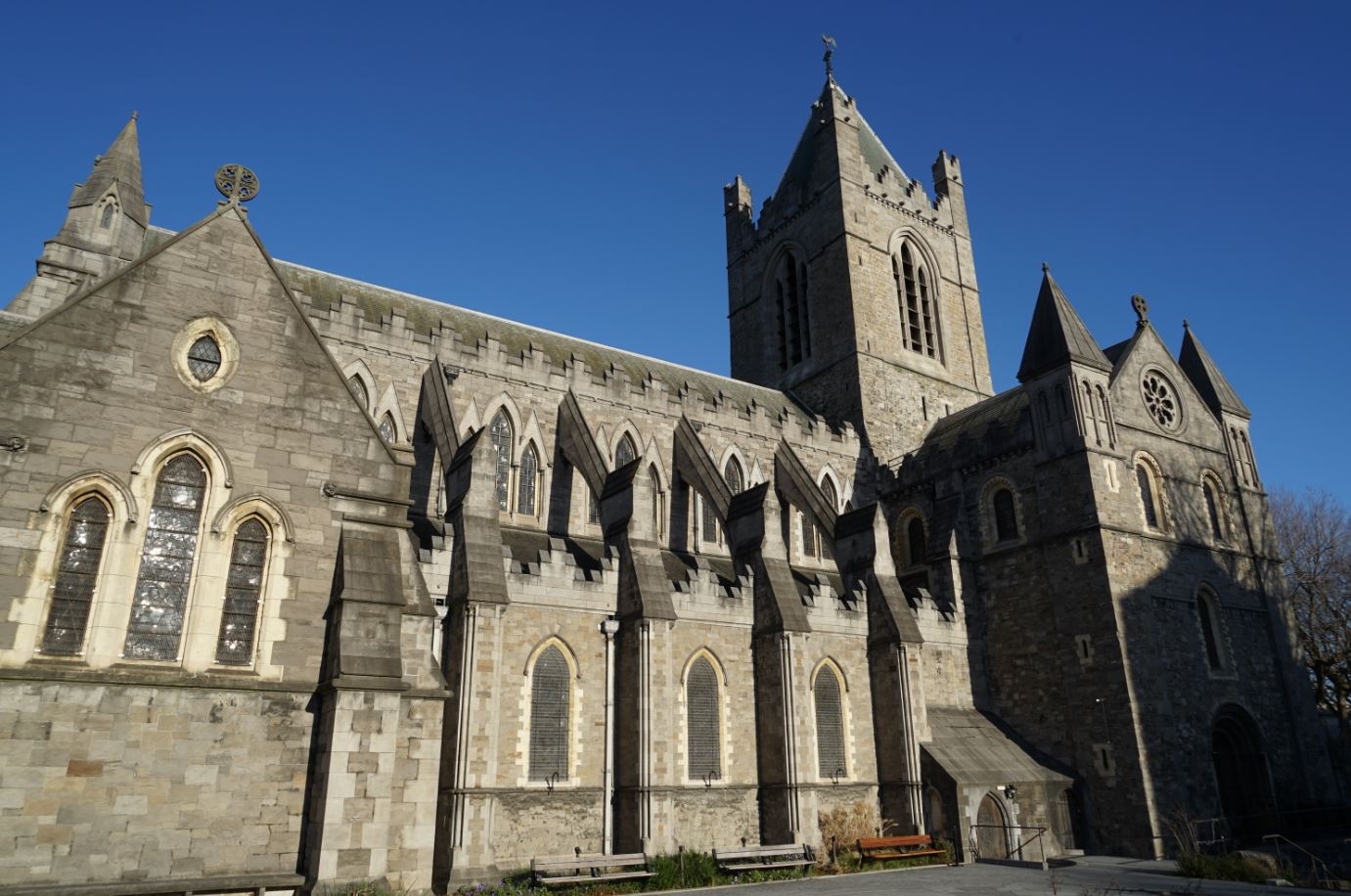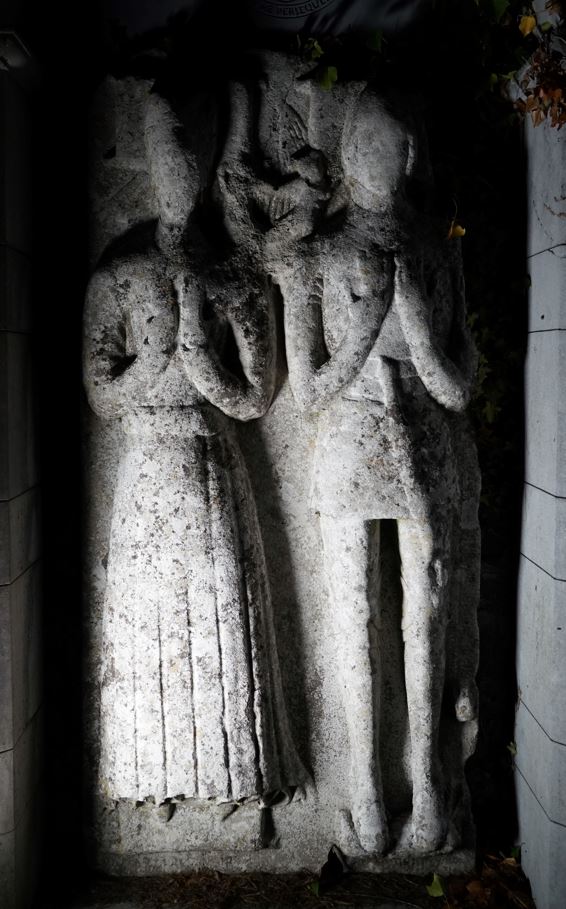1487 - the Coronation of Lambert Simnel
The on-going War of the Roses that had dogged England since 1455 continued unabated throughout the 1470s. The majority of the Anglo-Irish had sided with the Yorkists, so, for the most part, the English civil war had little impact in Ireland, at least while the sons of Richard of York, Edward IV and Richard III, sat on the throne. However, the overthrow of Richard III by Henry Tudor suddenly brought Ireland centre stage within the theatre of the English civil war.
Edward Plantagenet, nephew of Edward IV, was born in 1475 at Warwick. His father George, 1st duke of Clarence, had been born in Dublin Castle in 1449 and served as lord lieutenant of Ireland in 1462. In 1478, George was executed for leading an attempt to overthrow his brother Edward IV. Despite George’s disloyalty, his son Edward Plantaganet was made 17th Earl of Warwick when he was just three years old. In 1483, he was knighted by his uncle Richard III, and was widely expected to succeed to the throne. However, in 1485, after the death of the king Richard III in battle with Henry Tudor, Edward was kept a prisoner in the Tower of London by the newly crowned Henry VII. Edward was only ten years old, but while he was still alive, so too remained the hopes of the House of York that they could still claim back the English throne.
Around the same time that Edward Plantaganet, 17th Earl of Warwick, was born, so too was a boy who would become known as Lambert Simnel. His origins are obscure. It is not clear if Lambert Simnel was even his real name. Some say he was the son of a wood worker, other sources state he was the son of a shoe maker, while others claimed his father was a baker. All we know for certain is that he came from a humble background, but in a story that could almost be fiction, he would become one of the most controversial figures of the 15th century in both England and Ireland. The reason for this, at face value at least, was quite simple. He resembled the young earl of Warwick who was imprisoned in the Tower of London. This was significant because young Warwick was a contender to the throne of England, but his imprisonment in the tower meant that his supporters could do little to promote him as a viable challenger. Enter stage left, Lambert Simnel, whose apparent uncanny resemblance to Warwick was used by the Yorkists to impersonate their candidate to the throne of England. Initially, the Yorkists circulated false rumours that Warwick had escaped from the Tower. To counter this, the king had Warwick paraded at St Paul’s Cathedral, and then swiftly returned to prison. Realising that it would be difficult to persuade most in England that Simnel was Warwick, the Yorkists changed plan. In February 1487, Simnel was brought to Ireland, where support for the house of York remained strong and most were suspicious of the new Tudor regime.
The man who brought Limnel to Ireland was John de la Pole, earl of Lincoln, a nephew of Richard III and cousin of the imprisoned earl of Warwick. While Richard III was king, John de la Pole had served as his lieutenant in Ireland, so he was familiar with the leading political figures here and their open support for the House of York, which had gone largely unchallenged by the new Tudor king. When Henry Tudor took the throne, John de la Pole fled to France to the court of Margaret of Burgundy, sister of Edward IV and Richard III. He convinced her that he had helped young Edward Plantagenet, earl of Warwick, to escape from the Tower of London and requested her help to mobilise an army to retake the crown from Tudor. Margaret hired Martin Schwartz, a German military entrepreneur, to lead an army of 2000 German mercenaries. On 5th May, 1487, John de la Pole, Martin Schwartz and their mercenary army arrived in Dublin, where they were warmly received by Gerald fitzGerald, the 8th earl of Kildare.
Gerald FitzGerald was married to Alison fitzEustace, whose father Roland (Baron Portlester) had helped Gerald’s father escape from Dublin Castle in 1468. Indeed, Gerald’s mother was Joan fitzGerald, daughter of the 6th earl of Desmond
who had been executed in that year. Gerald had inherited his father’s estate in 1478, and in the same year served as chief governor of Ireland. During his term as earl of Kildare, the family were at the height of their power in Ireland, and after his death he would become renowned across the country as Gearóid Mór or Gerald the Great, or simply the Great Earl. His closet ally was his father-in-law, Roland fitzEustace, another Kildare man, who served as Lord Chancellor of Ireland (the highest judicial office in the English government of Ireland) as well as Lord Treasurer (a role that controlled all the finances of the English colony in Ireland). By the time Lambert Simnel arrived in Ireland, the earl of Kildare and his father-in-law Baron Portlester had monopolised the English government in Ireland for several years and sabotaged any attempts by the Tudor crown to introduce new government appointments sympathetic to the latest royal regime.
Whether or not Gerald fitzGerald realised that Lambert Simnel was not who he claimed to be is uncertain. What is clear is that fitzGerald was prepared to make a considerable gamble by openly backing Edward Plantagenet’s claim to the throne of England and openly defy Henry Tudor who now sat on that throne. The motivation for this extraordinary move was clear. While the House of York occupied the throne of England, the earls of Kildare had prospered and had been allowed to rule Ireland as royalty in all but name. Gerald sensed, quite correctly as it happened, that the House of Tudor would take a much more direct interest in Irish affairs. He now saw an opportunity to change that by becoming a ‘king maker’.
On Sunday 27th May, Gerald presided over the coronation of Lambert Simnel as king Edward VI of England at a ceremony at Christ Church in Dublin, where a sermon was preached by John Payne, the Franciscan bishop of Meath. It is said that a crown small enough to fit the head of the boy Simnel was borrowed from a statue of Mary at a nearby church, and placed on his head by Walter fitzSimon, archbishop of Dublin. Afterwards, the newly crowned king of England was paraded through the city streets to Dublin Castle. Never before, or since, had a king of England been crowned in Ireland. The fact that Simnel himself had no legitimate claim to the throne is somewhat irrelevant. The event symbolised a remarkable show of defiance by the Anglo-Irish. Their confidence and ambitions had grown to such an extent that they no longer realised the significant limitations of their own resources. Curiously, the one person in Ireland who openly opposed the coronation and refused to be convinced by the story of Lambert Simnel, was an Italian, namely Octavian, archbishop of Armagh, and a member of one of the noble families of Florence, the Del Palagios.
The Great Earl then mobilised a force of some 4000 Gaelic foot soldiers (known as kerne) commanded by his brother Thomas. They were joined by the force of some 2000 German mercenaries commanded by Martin Schwartz. Together they embarked on an invasion of England on 4th June, only a week after Simnel’s coronation in Dublin. Since 1169, England had frequently sent armies to Ireland. Since then, many Irish soldiers had traveled to England to support the armies of various English kings. Now, for the first time, an Irish army embarked on an invasion of England, albeit in support of an English boy, and an impostor at that, to take the English throne. Twelve days after they arrived near Furness in Lancashire, the Irish and German army were decisively defeated by the king’s army at Stoke-by-Newark in Nottinghamshire on June 16th and the short-lived Irish invasion of England was over. Gerald’s brother Thomas was killed, and so-too were John de la Pole and Martin Schwartz, while young Lambert Simnel was captured and reputedly put to work in the royal kitchen and disappeared once again into obscurity. The Great Earl himself, after some intense negotiations, was pardoned a year later.
It’s curious how history repeats itself. The defeat of the Irish and German army in 1487 was the last major military engagement in the War of the Roses, but it was not the last occasion that an impostor would attempt to use Irish support to gain the throne of England. Several years before Edward Plantagenet (the boy who Lambert Simnel had impersonated) was imprisoned in the Tower of London by Henry Tudor, king Richard III had imprisoned the sons of his brother Edward IV, namely Edward and Richard. This Edward had reigned very briefly as Edward V, but was usurped by his uncle Richard III in 1483. The new king immediately had his two young nephews, Edward and Richard, imprisoned in the Tower of London. Known afterwards as the Princes of the Tower, they were never seen again and to this day their fate is unknown.
Enter stage left, Perkin Warbeck, a native of Tournai in Belgium. In 1491, several years after the disappearance of the princes, and less than four years after Lambert Simnel had been crowned king in Dublin, Perkin Warbeck landed in Cork. He initially claimed to be the Earl of Warwick, as had Lambert Simnel, though he later claimed under interrogation that it was the citizens of Cork who had initially recognised him as the earl. Presumably in a case of once bitten twice shy, no one in Ireland rushed to support his claim. So, he left Ireland and traveled throughout the royal courts of Europe, claiming to be Richard, the younger of the two princes in the tower, who had not been seen in public since 1483. His cause was bolstered when Margaret of Burgundy officially recognised him as the younger son of her late brother, Edward IV. It is unlikely that she had ever met her real nephew, but it is hard to believe that she, as in the case of Lambert Simnel several years earlier, did not realise that this young man was another impostor. Despite Perkin’s spurious claim, with Margaret of Burgundy’s support, the House of York made one last-ditch attempt to regain the English throne.
With military support provided by his would-be aunt, Warbeck attempted to invade England in July 1495, hoping for popular support. Instead, they were routed and Warbeck sailed for Ireland. With the support of the Maurice fitzGerald, 9th Earl of Desmond, he besieged Waterford. Eight years earlier, the towns people of Waterford had refused to recognise Lambert Simnel as the earl of Warwick, and now they once again refused to accept Warbeck as prince Richard. The siege of Waterford failed, and Warbeck fled to Scotland where he was well-received by James IV and married the Scottish king’s cousin, Lady Catherine Gordon. After another failed invasion of England with the assistance of the Scots in September 1496, Warbeck returned to Ireland and once again attempted to lay siege to Waterford. In June 1497, after a revolt in Cornwall, Warbeck sailed for England in the hope of finally making his claim to the English throne as Richard. Once again he failed. On this occasion he was captured and imprisoned in the Tower of London with Edward Plantagenet, earl of Warwick. The true contender and the false pretender found themselves imprisoned side-by-side. After the two men conspired to escape, they were jointly executed in November 1499, together with John Walter, the mayor of Cork who had openly supported Perkin Warbeck when he first came to Ireland.
With the death of Edward, earl of Warwick, the true heir to the house of York, the family’s claim to the English throne came to a sudden end. In the short term, there would be little change in Ireland. Henry VII didn’t have the financial resources for a military intervention in Ireland, and for the time being he accepted the fact that the earl of Kildare was the most powerful man who could defend English interests in Ireland, despite the overwhelming evidence that the earl was more concerned with serving his own interests. In the long run, however, the house of Tudor’s claim to the English throne would have a dramatic impact, especially during the rule of the next Henry Tudor, king Henry VIII.



